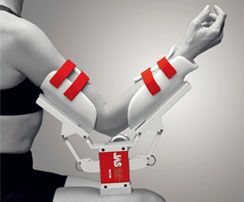ELBOW CONTRACTURE (STIFFNESS)
This is a common problem affecting the elbow. It is seen in arthritis (both osteo and rheumatoid as well as after injury to the elbow or after surgery to fix fractures around the elbow. The elbow joint gradually stiffens. People are able to tolerate quite a degree of motion loss before it becomes a problem. If the elbow straightens enough to hang “normally” when they walk (about 20 degrees), this is usually acceptable. Likewise, if they can get the hand to the mouth this is also acceptable. Once stiffness is worse than this help is usually sought.
WHAT ARE THE SIGNS AND SYMPTOMS?
The elbow will be stiif and will not move outside a certain range. It is not usually painful unless there is damage within the joint (eg due to arthritis or fracture). If there is any locking this is due to co-existing loose bodies.
HOW IS THE DIAGNOSIS MADE?
The doctor will listen to the description of events and examine the elbow. X-Rays will also be taken to determine whether there is a piece of bone involved. Usually no further investigation is needed.
WHAT IS THE INITIAL TREATMENT?
Treatment depends of the duration of the symptoms and the degree of disability. Early after a fracture serial night splints which push the arm ever straighter may be beneficial, particularly if the patient does not want surgery or the deformity is small. Physiotherapy is usually of little benefit.
IF INITIAL TREATMENT DOESN’T WORK, WHAT’S NEXT?
If the degree of deformity remains unacceptable then dynamic bracing may be an option.
We have used the JAS brace with some success

If this fails then arthrolysis (release) of the joint is an option.